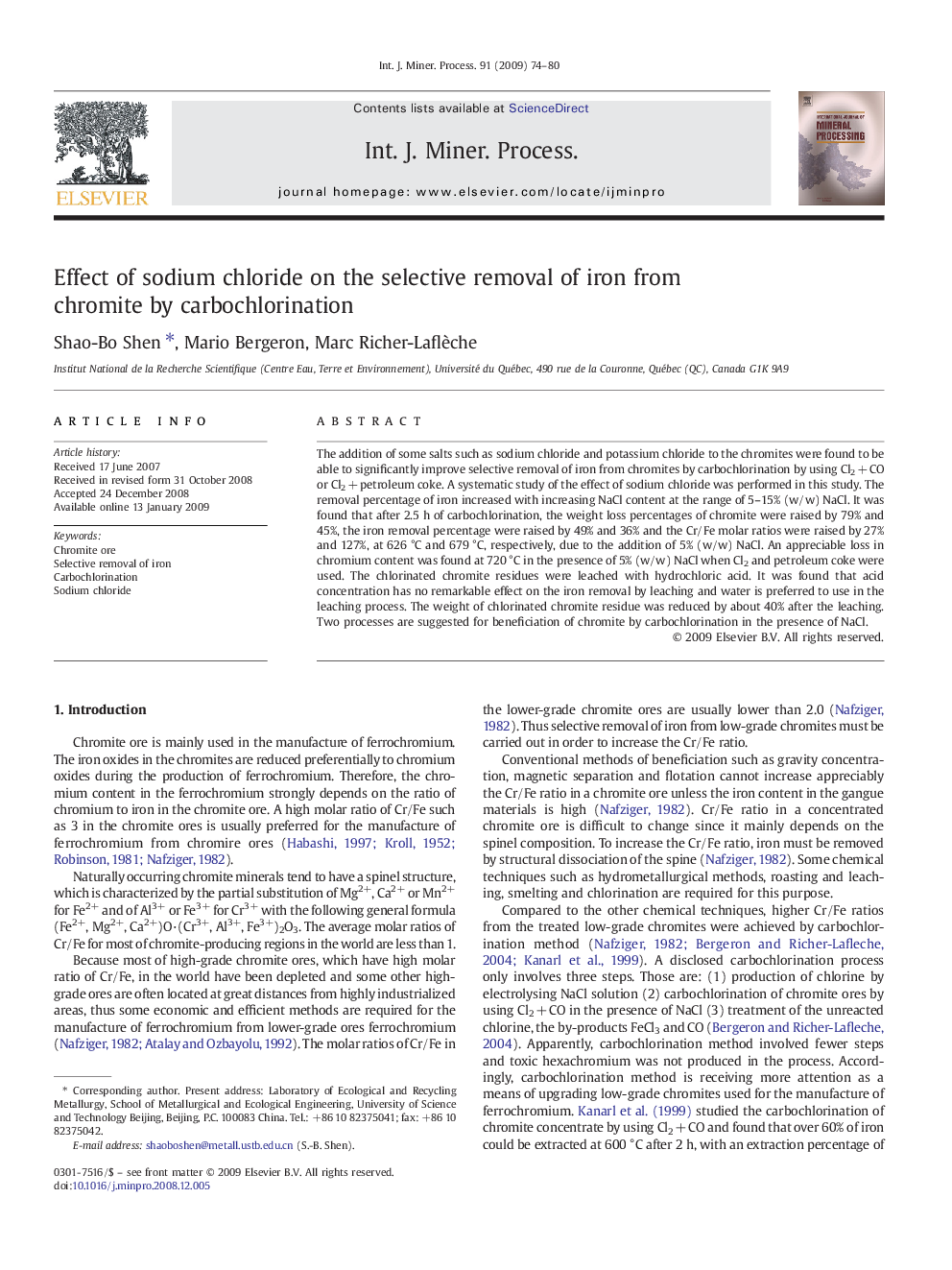| Article ID | Journal | Published Year | Pages | File Type |
|---|---|---|---|---|
| 214322 | International Journal of Mineral Processing | 2009 | 7 Pages |
The addition of some salts such as sodium chloride and potassium chloride to the chromites were found to be able to significantly improve selective removal of iron from chromites by carbochlorination by using Cl2 + CO or Cl2 + petroleum coke. A systematic study of the effect of sodium chloride was performed in this study. The removal percentage of iron increased with increasing NaCl content at the range of 5–15% (w/w) NaCl. It was found that after 2.5 h of carbochlorination, the weight loss percentages of chromite were raised by 79% and 45%, the iron removal percentage were raised by 49% and 36% and the Cr/Fe molar ratios were raised by 27% and 127%, at 626 °C and 679 °C, respectively, due to the addition of 5% (w/w) NaCl. An appreciable loss in chromium content was found at 720 °C in the presence of 5% (w/w) NaCl when Cl2 and petroleum coke were used. The chlorinated chromite residues were leached with hydrochloric acid. It was found that acid concentration has no remarkable effect on the iron removal by leaching and water is preferred to use in the leaching process. The weight of chlorinated chromite residue was reduced by about 40% after the leaching. Two processes are suggested for beneficiation of chromite by carbochlorination in the presence of NaCl.
